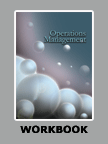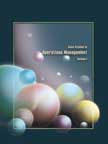H&M's Supply Chain Management Practices
|
|
ICMR HOME | Case Studies Collection
To download H&M's Supply Chain Management Practices case study
(Case Code: OPER066) click on the button below, and select the case from the list of available cases:

» Operations Case Studies
» Operations Short Case Studies
» View Detailed Pricing Info
» How To Order This Case
» Business Case Studies
» Case Studies by Area
» Case Studies by Industry
» Case Studies by Company

Please note:
This case study was compiled from published sources, and is intended to be used as a basis for class discussion. It is not intended to illustrate either effective or ineffective handling of a management situation. Nor is it a primary information source.
Chat with us

Please leave your feedback

|




Case Details: |
Price: |
| Case Code |
: |
OPER066 |
For delivery in electronic format: Rs. 400;
For delivery through courier (within India): Rs. 400 +Shipping & Handling Charges extraThemes
Supply Chain Management |
| Case Length |
: |
18 Pages |
| Period |
: |
1997-2007 |
| Organization |
: |
Hennes &
Mauritz AB |
| Pub Date |
: |
2008 |
| Teaching Note |
: |
Not Available |
| Countries
|
: |
Sweden |
| Industry |
: |
Apparel
Retailing |
Abstract:
|
The case discusses the innovative supply chain management practices of Sweden
based apparel retailer - Hennes & Mauritz AB (H&M), which enabled the company to
gain advantage over other fashion retailers in the world. H&M designed garments
centrally at Stockholm, Sweden. These were then sent to the production offices
of the company and then to the manufacturers. H&M did not own any manufacturing
facilities and all the production was carried out by more than 700 independent
suppliers located in Asia and Europe. In the case of garments that were in
demand, H&M used the facilities of the manufacturers in Europe. The garments
with longer lead times were made in Asia.
|

|
The garments manufactured at different
locations across the world were sent to a central warehouse
located in Hamburg, Germany. In every country in which it
operated, H&M had a distribution center. From Hamburg, the
garments were sent to these distribution centers, from where
they were distributed locally. The garments were replenished
every day depending on the demand. With constant replenishment,
H&M maintained novelty in its products, due to which the
customers visited the company's store repeatedly. The case
explains in detail the design, production, distribution and
store management processes at H&M.
Issues:
» Analyze H&M's supply chain management practices.
» Study the design, production, distribution and store management processes of
H&M.
» Evaluate how H&M, through its efficient supply chain management, was able to
bring new designs and trends to the customers in quick time.
Contents:
Keywords:
Hennes & Mauritz AB, Supply Chain Management, Lead Time,
Designing, Production, Quality and Security Tests, Distribution, Store
Management, Fast Fashion, Supplier Code of Conduct, Product and Information Flow
H&M's Supply Chain Management Practices
- Next Page>>
|
|










